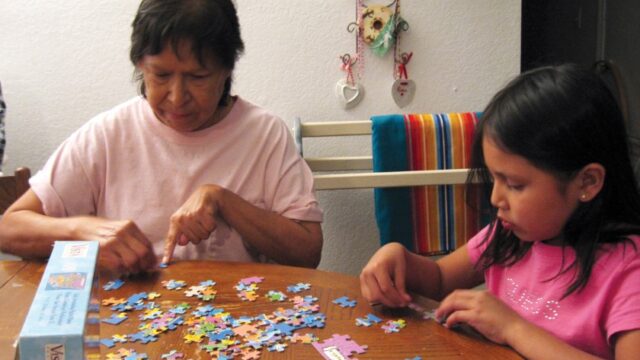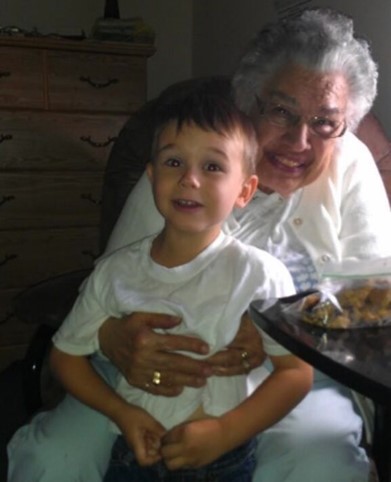Resource Library
How Relative/
Download This Resource
Tip Sheet
How Relative/Kin Caregivers Can Access Services and Advocate for Native Children in Their Care
Download This Resource

Purpose: The National Indian Child Welfare Association (NICWA) created this resource as a tip sheet for service providers to share with relatives/kin caring for Native children. It provides guidance to help caregivers access services, utilize them effectively, and advocate for Native children in their care.
Note: This tip sheet uses “relative/kin caregiver” and “relative child” to refer to adults and children respectively, who are connected to each other by kinship bonds, whether extended family members or close friends. Throughout the tip sheet, “child” and “children” refer to Native children under the care of a relative/kin caregiver.

Collaborate with tribal or state child welfare caseworkers, kinship navigators, community providers, and trusted community members.
- Contact the child’s tribe and your tribe, if different, to inquire about available services and resources.
- Check to see if there is a tribal or state kinship navigator program near you. These programs link caregivers to essential tribal and state resources.
- In state child custody cases, the state caseworker ensures the child in your care has access to resources that align with the family’s case plan. The child’s tribe may be involved in the case and able to offer or suggest culturally responsive services. Contact them with questions about service and resource needs.
- Laws and resources supporting relative/kin caregivers vary depending on whether you live on or off tribal lands. Contact the child’s tribe to determine jurisdiction and eligibility for services. Find information about resources near you in the GrandFacts fact sheet for your tribe and/or state.
- Other relative/kin caregivers, community providers, natural helpers, and traditional healers can offer valuable information about available resources. Consult trusted community members for assistance.
Access financial support.
- Check if your family qualifies for food assistance like SNAP, WIC, or tribal-specific financial support. Contact the child’s tribe, another local tribe, or an urban Indian center to see if they have emergency food pantries, weekly food distribution, or other community nutrition programs.
- Apply for Temporary Assistance for Needy Families (TANF). Find your tribal or state TANF Office to learn more. Ask about child-only TANF.
- Ask your tribal child care or early child development center about eligibility, enrollment criteria, and necessary paperwork. For more information, check out Finding and Paying for Child Care.
Determine health care needs.
- Contact your Indian Health Services (IHS) center, tribal clinic, or other local health system to see what paperwork you need to complete before scheduling appointments for a well-child visit, dental checkup, mental health intake, or other specialty appointments. Ask if help is available with filling out paperwork, if wanted.
- If your child needs health insurance, explore Medicaid and the Children’s Health Insurance Program through the state’s Medicaid agency. Visit HealthCare.gov for more information.
- Verify if your child’s insurance covers mileage or transportation to medical appointments. Your tribe or county may offer transportation via fixed-route buses or a medical shuttle to local health centers.
- Urban Indian Organizations (UIOs) provide comprehensive, culturally specific health services to urban Natives who reside outside of an IHS area. Explore UIOs in your area.
- If applicable, visit your IHS center, tribal clinic, or other local health care facility to inquire about chemical dependency and behavioral health resources. You can also contact the SAMHSA National Helpline for information and treatment referrals.
Establish educational support.
- If your child is not enrolled in school, ask about Indian Education Programs or view the BIE Schools Directory. If your child is enrolled in a public school, ask if there are programs that support Native students with academic, social, emotional, and cultural enrichment.
- Connect with your child’s school about registration requirements and necessary paperwork such as birth, health, and previous school records. Reach out to the McKinney-Vento school liaison to ask if the child qualifies for services under that law and explore if your community has an education or heath care consent law.
- Check with your child’s elementary school, use the Head Start Center Locator, or ask your tribal or state child welfare agency about early childhood education programs near you.
- Ask your child’s school about food assistance programs like free or reduced-price school meals, as well as afterschool and summer meal programs, and how to enroll.
- If your child needs special education services or support (e.g., an individualized education program [IEP] or a 504 plan), contact the school’s special education office for information on available support, paperwork required, and how you can be involved as the caregiver.
- Contact your child’s school to explore afterschool sports, traditional arts and crafts, drumming, singing, and other community-specific activities.
Navigate housing and shelter needs.
- For urgent housing needs, rental assistance, home improvement programs, elder housing support for elders raising relative children, or other housing resources, reach out to your tribal housing authority, local public housing agency, state child welfare agency housing unit, or urban Native center.
- For assistance with energy costs, apply for the Low-Income Home Energy Assistance Program (LIHEAP). Contact your tribal housing department or state LIHEAP office.
- Explore this resource on Housing Assistance for Native Americans.
Advocate when your relative child is in state child welfare custody.
- This resource on How Relative Caregivers Can Advocate for Relative Native Children in State Child Welfare Agency Custody may be a helpful place to start.
- For legal support, refer to this resource on Legal Assistance for Native Kinship/Grandfamilies Involved with Child Welfare: How to Find an Attorney & Help Them Help You.
Access other essential resources.
- Legal assistance may be necessary for school enrollment, special education needs, public benefits, housing, custody agreements, filing for guardianship, and more. Contact your tribe’s legal department (if available), a state legal aid organization, or your Area Agency on Aging (AAA) or Title VI Native American Aging Program for assistance.
- Many tribes have cultural departments that offer traditional language programs and cultural classes, host community events, and more. Contact the child’s tribe or another local tribe to explore offerings.
- Reach out to your tribal behavioral health department, tribal social services agency, or community mental health center to inquire about available caregiver support groups or referrals.
- Explore eligibility for Supplemental Security Income (SSI) and Social Security Disability Insurance (SSDI) benefits. Here are some frequently asked questions regarding SSI/SSDI eligibility for American Indians and Alaska Natives.
- For senior services and support for elders, contact your tribal elders’ program or your local AAA or Title VI Native American Aging Program.
- For help navigating Veterans Affairs (VA) benefits, resources, and opportunities, contact your tribal VA representative. You can also locate a nearby VA office or service provider for assistance.
- For support with caregiving, ask about respite care options in your community. To build your nurturing support network, consider gathering with family and community members or asking a trusted person to help facilitate a family team meeting to determine who can provide intermittent childcare.
- For youth support, We R Native is a resource hub for Native youth by Native youth.
- Dial 2-1-1 or visit 211info for more information on local resources from crisis intervention to support with basic needs.


